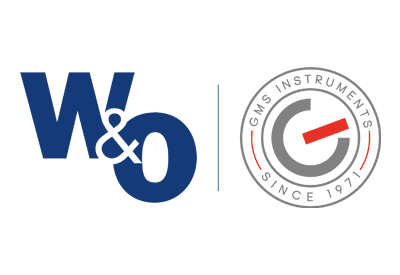
Temperature
Thermometers
Whether you are having a barbecue, measuring how high your fever is getting or deciding whether you want to go to the beach, temperature is all around you. Temperatures can range from far into the negative for cryogenic applications to extremely high temperatures in industrial steel plants. With such a common goal, to indicate the current temperature, there is always a thermometer that fits the requirements.
Thermometers are instruments that indicate the current temperature of the surroundings or the medium that they are inserted into onto a screen or a dial. This can be the temperature of a liquid, of a room or even the temperature of a pile of corn. Thermometers can be installed in various ways, with many different connection types and sizes.
A thermometer can be both analogue and digital. An analogue thermometer shows the temperature through the use of a mechanical principle, without the use of any electricity or electronics. A digital thermometer has a screen or a wired output, showing the temperature output on a display. Thermometers can also be a combination of the two! Then the analogue display shows the temperature mechanically, but an electrical signal is also produced!
Some examples of analogue and digital thermometers
- Pyrometers
- Remote reading thermometers
- Gas actuated thermometers
- Digital thermometers
- Bimetal thermometers
- Industrial thermometers
- Infrared thermometers
Pyrometers
Pyrometers are used for exhaust gas measurements. The exhaust gas is very high in temperature, so these need to be robust. Also the exhausts are part of the engine system, which is always very susceptible to vibrations. They are usually made of steel or stainless steel and filled with special liquids that can withstand the high temperature. A good pyrometer needs to be sturdy, reliable and vibration resistant! See an example pyrometer here!
Remote reading thermometers
This name refers more to the design than the use or measuring principle. The remote reading thermometers use a stem attached to a long cable or metallic long rod, which is in turn attached to an indicator. This can be a digital or analogue dial. The pyrometer we just described above can also be ordered as a remote version for example! With many different dial sizes, temperature ranges and connection options, there is always a suitable version for when the dial can not be too close to the process.
Gas actuated thermometers
The name already suggests it, these are actuated by a gas. Gas actuated thermometers are filled with an inert gas. The gas increases in volume when the temperature increases, moving the internal movement of the thermometer mechanically. These are commonly seen in sanitary, medical and food applications. They are usually made from full stainless steel.
Digital thermometers
Digital thermometers are very common. The basic design has a stem portion and a digital readout, but they can come in all shapes and sizes. For industrial applications you may see them in heavy duty variants, but for other applications they may be made of simple plastic.
Bimetal thermometers
The name bimetal already explains a part of the principle behind this common variant of thermometer. These have an inside mechanism with a section made of two different metals. The metals expand or contract differently when they are exposed to temperature and that is translated into the current temperature. Simple, yet fascinating!
Industrial thermometers
The industry golden standard (quite litterally because they are usually made of brass). With their simple yet indestructible design, these have dominated the market for temperature measurement on ships engines. Their slim design makes them ideal for installing inbetween all sorts of wires, cables and other equipment and the easy design makes them accessible on very short notice. Can also be designed with a contact!
Infrared thermometers
Making use of a laser to measure temperature, these have become especially common during the recent pandemic. Beside the use as a forehead thermometer, they are also used in industrial settings due to the high temperature ranges and ease of use. Just aim and click at a nonreflective (preferably dark) surface and the temperature shows up on the screen!
Some examples of mounting and connection options
- Bottom connection (optional with front- or backflange)
- Back connection (optional with frontflange)
- BSP threads
- NPT threads
- Metric threads
- Different lengths of insert and cable
- Different cable types
Would you like to know what other options are available? Just ask one of our experts or take a look at our thermometer product range.
